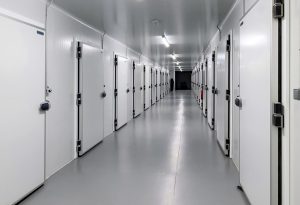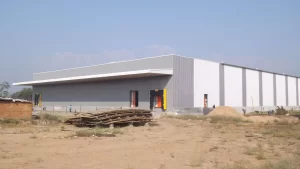How to Set Up a Cold Storage: A Comprehensive Guide
Introduction
Setting up a cold storage facility is essential for businesses that deal with perishable goods or require long-term storage of temperature-sensitive items. Whether you’re in the food industry, pharmaceuticals, or any other field that relies on cold storage, it’s crucial to understand the process involved in creating an efficient and reliable cold storage system. In this guide, we’ll walk you through the key steps and considerations to help you set up a cold storage facility that meets your specific needs.
1. Assess Your Requirements
Before diving into the technical aspects of setting up a cold storage, it’s important to assess your requirements and understand the nature of the products you’ll be storing. Consider factors such as the required temperature range, storage capacity, and any specific regulations or standards that apply to your industry. This assessment will help you determine the size, layout, and features of your cold storage facility.
1.1 Temperature Requirements
Different products have different temperature requirements for optimal storage. For example, frozen foods may need to be stored at temperatures below -18 degrees Celsius, while pharmaceuticals may require a specific temperature range to maintain their efficacy. Identify the temperature range needed for your products and ensure your cold storage facility can maintain these temperatures consistently.
1.2 Storage Capacity
Estimate the amount of storage space you’ll need based on your inventory size and projected growth. Consider factors like shelving, racks, and pallet systems to maximize storage capacity. Additionally, think about the layout and organization of your facility to ensure efficient access to stored items.
1.3 Regulatory Compliance
Be aware of any regulatory requirements or industry standards that apply to your products. Depending on the nature of your business, you may need to comply with food safety regulations, Good Manufacturing Practices (GMP), or other relevant guidelines. Incorporate these requirements into your cold storage design to ensure compliance.

2. Design and Layout
Once you have a clear understanding of your requirements, it’s time to design your cold storage facility. Here are some key considerations to keep in mind:
2.1 Insulation
Insulation is critical for maintaining the desired temperature inside your cold storage. Choose high-quality insulation materials such as polyurethane foam or polystyrene panels to minimize heat transfer. Ensure that the walls, floors, and ceilings are properly insulated to create a tightly sealed environment.
2.2 Cooling System
Selecting an appropriate cooling system is crucial for achieving and maintaining the required temperatures. Options include vapor compression refrigeration systems, evaporative cooling systems, or blast freezers, depending on your specific needs. Consult with a refrigeration engineer to determine the most suitable system for your cold storage facility.
2.3 Air Circulation
Proper air circulation is essential to maintain consistent temperatures throughout the cold storage facility. Install fans or air handling units strategically to ensure uniform airflow. This helps prevent temperature variations and ensures that all stored items are adequately cooled.
2.4 Lighting
Choose energy-efficient lighting that produces minimal heat. LED lighting is an excellent option as it generates less heat compared to traditional lighting systems. Adequate lighting is essential for visibility and safety within the cold storage facility.
3. Equipment and Infrastructure
To operate a cold storage facility effectively, you’ll need to invest in the right equipment and infrastructure. Consider the following:

3.1 Refrigeration Units
Invest in reliable and energy-efficient refrigeration units that can meet the cooling requirements of your facility. Choose equipment with built-in temperature controls and alarms to monitor and regulate temperature levels accurately.
3.2 Shelving and Racking
Optimize your storage capacity by investing in durable shelving and racking systems. Choose options that are compatible with cold environments and can withstand low temperatures without compromising structural integrity.
3.3 Monitoring and Security Systems
Install a comprehensive monitoring system to track temperature levels, humidity, and other critical parameters. Alarms and alerts should be set up to notify personnel of any deviations from the desired conditions. Additionally, implement security measures such as access control systems, surveillance cameras, and fire suppression systems to safeguard your cold storage facility.
4. Maintenance and Operations
Maintaining your cold storage facility is vital to ensure its longevity and optimal performance. Consider the following:
4.1 Regular Inspections
Schedule regular inspections of your cold storage facility to identify any potential issues. This includes checking insulation, refrigeration systems, and other critical components. Promptly address any maintenance or repair needs to prevent downtime and minimize the risk of product spoilage.
4.2 Staff Training
Train your staff on proper cold storage procedures, including temperature monitoring, hygiene practices, and emergency protocols. Well-trained personnel are crucial for maintaining the integrity of the cold chain and ensuring the safety and quality of stored products.
4.3 Record-Keeping
Maintain detailed records of temperature logs, maintenance activities, and any incidents or deviations from standard procedures. These records are essential for quality control, regulatory compliance, and troubleshooting potential issues.
Conclusion
Setting up a cold storage facility requires careful planning and attention to detail. By assessing your requirements, designing an efficient layout, selecting the right equipment, and implementing robust maintenance practices, you can establish a reliable and high-performing cold storage system. Remember to regularly review and update your processes to adapt to changing industry standards and evolving business needs. With a well-designed cold storage facility, you can ensure the longevity and quality of your products while meeting customer demands in a temperature-controlled environment. https://commgen.com.au/
